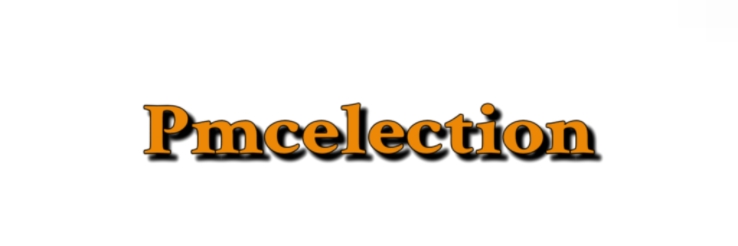When it comes to optics, understanding the various types of lenses is crucial. Double concave lenses, commonly known for their unique shape and functionality, play an important role in a multitude of applications. This ultimate guide will help you navigate through the intricacies of double concave lenses, their uses, and benefits for achieving clear vision.
If you are looking for more details, kindly visit Double Concave Lenses.
What are Double Concave Lenses?
Double concave lenses, also referred to as diverging lenses, curve inward on both sides, resembling an hourglass shape. Unlike convex lenses that converge light rays, double concave lenses spread out light rays that are passing through them. This property allows them to be effective in various optical devices.
Key Features of Double Concave Lenses
These lenses are characterized by a few remarkable features:
- Divergence of Light: They cause parallel light rays to diverge after passing through the lens.
- Focal Point: The focal point for double concave lenses is virtual, meaning the image formed appears to be on the same side as the object.
- Negative Focal Length: Their focal length is negative, which is indicative of the diverging properties.
Applications of Double Concave Lenses
Double concave lenses are widely used in optical devices and scientific instruments. Here are some common applications:
1. Glasses for Myopia
Individuals with myopia (nearsightedness) commonly use glasses equipped with double concave lenses. These lenses help in correcting vision by allowing distant objects to be seen more clearly.
2. Optical Instruments
In microscopes and telescopes, double concave lenses serve to diversify and focus light, enhancing the functionality of these instruments.
3. Projectors
They are utilized in projectors to widen the beam of light, enhancing the image display on screens.
Benefits of Double Concave Lenses
There are numerous benefits of using double concave lenses, making them an essential component in optics:
Enhanced Clarity
One of the primary advantages is that they enhance clarity in vision for those suffering from myopia.
Cost-Effectiveness
Double concave lenses are generally less expensive to manufacture than other lens types, making them cost-effective solutions for optical products.
Lightweight Design
Due to their design and the materials used, these lenses are often lightweight, making them comfortable for users in everyday applications such as eyeglasses.
Choosing the Right Double Concave Lens
Selecting the right lens depends on several factors including the degree of myopia, the application of the lens, and the desired clarity. It is advisable to consult an optometrist for personalized recommendations based on individual needs.
Common Misconceptions
Despite their importance, double concave lenses are often misunderstood. Some believe they can only be used for nearsightedness; however, they are versatile and can feature in several optical setups beyond eyeglasses.
Future Trends in Double Concave Lenses
With ongoing advancements in technology, double concave lenses are evolving. Developments in materials science promise more durable and lightweight lenses, while further research into optical technologies seeks to improve the overall effectiveness of these essential tools.
In conclusion, double concave lenses are pivotal for achieving clear vision and enhancing various optical instruments. Their widespread applications and distinct benefits make them invaluable in both everyday and professional contexts. By understanding their functionalities, users can better appreciate their significance in the realm of optics.
When it comes to optics, understanding the various types of lenses is crucial. Double concave lenses, commonly known for their unique shape and functionality, play an important role in a multitude of applications. This ultimate guide will help you navigate through the intricacies of double concave lenses, their uses, and benefits for achieving clear vision.
What are Double Concave Lenses?
Double concave lenses, also referred to as diverging lenses, curve inward on both sides, resembling an hourglass shape. Unlike convex lenses that converge light rays, double concave lenses spread out light rays that are passing through them. This property allows them to be effective in various optical devices.
Key Features of Double Concave Lenses
These lenses are characterized by a few remarkable features:
- Divergence of Light: They cause parallel light rays to diverge after passing through the lens.
- Focal Point: The focal point for double concave lenses is virtual, meaning the image formed appears to be on the same side as the object.
- Negative Focal Length: Their focal length is negative, which is indicative of the diverging properties.
Applications of Double Concave Lenses
Double concave lenses are widely used in optical devices and scientific instruments. Here are some common applications:
1. Glasses for Myopia
Individuals with myopia (nearsightedness) commonly use glasses equipped with double concave lenses. These lenses help in correcting vision by allowing distant objects to be seen more clearly.
2. Optical Instruments
In microscopes and telescopes, double concave lenses serve to diversify and focus light, enhancing the functionality of these instruments.
3. Projectors
They are utilized in projectors to widen the beam of light, enhancing the image display on screens.
Benefits of Double Concave Lenses
There are numerous benefits of using double concave lenses, making them an essential component in optics:
Enhanced Clarity
One of the primary advantages is that they enhance clarity in vision for those suffering from myopia.
Cost-Effectiveness
Double concave lenses are generally less expensive to manufacture than other lens types, making them cost-effective solutions for optical products.
Lightweight Design
Due to their design and the materials used, these lenses are often lightweight, making them comfortable for users in everyday applications such as eyeglasses.
Choosing the Right Double Concave Lens
Selecting the right lens depends on several factors including the degree of myopia, the application of the lens, and the desired clarity. It is advisable to consult an optometrist for personalized recommendations based on individual needs.
Common Misconceptions
Despite their importance, double concave lenses are often misunderstood. Some believe they can only be used for nearsightedness; however, they are versatile and can
Contact us to discuss your requirements of Cone Lenses. Our experienced sales team can help you identify the options that best suit your needs.

